Overtaking (Part One)
Pete the Free continues to teach his grannie to suck eggs in tips on overtaking (part one)…
To me half the fun of riding is acquiring a target (cager), zeroing in and then blowing away. All done in the best possible taste of course. It is, though, a high risk activity. Interestingly, head on collisions between bikes and cars are relatively unusual as a bike will often fit between two cars (as illustrated in one of the following videos). However, when they do occur they are devastating. Because of the narrow nature of a bike, it’s agility and it’s power, bikers as a group often get away with perfectly dreadful overtakes. Nonetheless, it is not hard to apply a few simple rules that make overtaking smoother and safer.
Common errors
- Poor observation, anticipation and planning.
- Following through on someone else’s overtake (trusting their planning).
- Over anxious and hence rushed overtakes (presumably to “keep up”).
- Floating around the back of the target vehicle “like a bee round a honeypot”.
Poor observation and planning
Always be looking as far ahead as possible, but don’t forget rear observation, a faster (but not necessarily safer) rider may be about to overtake YOU. This is why you should consider a life saver glance before each overtake. Ask yourself: What can you see? What can’t you see? Is a large vehicle obscuring your view of other traffic? What can you reasonably expect to happen?
I saw the three riders approaching and guessed they would all follow through on the overtake which is why I pull over to the left.
Following through on someone else’s overtake
Never, ever, trust someone else’s assessment. They are not planning (if they are planning at all) YOUR overtake.
In the clip there are three riders. Rider number one snatches an overtake, rider number two follows through and nearly becomes the jam in a car sandwich, rider number three has to abort getting very close to the car then swoops around.
Floating around the back of the target vehicle
Remember the triangle of death, it is called that for a reason. Actually I call it the quadrangle of death, that’s ‘cos I’m a pedant.
See the illustration below:

If the overtake is NOT ON follow at a two second distance. As you anticipate an overtake developing then move up, never crossing the “hypotenuse”, to the pre-overtake position. If an overtake is not possible, drop back.
If the overtake IS ON then move to the overtake position THEN overtake firmly and in a straight line to your chosen position in front of the target vehicle. This shows any oncoming vehicles the side of your bike which will tend to make them feel more confident that you are not going to hit them. This whole process avoids the no go zone behind the car, does away with “swooped” overtakes and will make you, the target vehicle and any oncoming traffic more comfortable with the whole process.
Once in the overtake position, if the situation changes and you need to ABORT the overtake, simply shut the throttle and move back to the pre-overtake position and then to the following position.
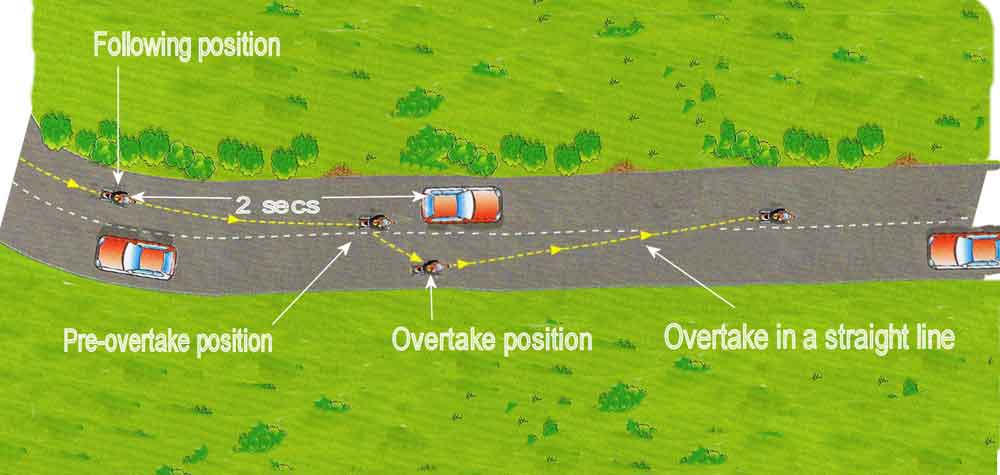
This is the three phase overtake. You are never exposed in the triangle of death. You have two chances to abort the overtake from the pre-overtake and the overtake positions. The straight line accelaration allows you to use up to the maximum amount of power available thus reducing your exposure whilst overtaking, also there is no risk of drifting wide as in a “swooped” overtake. The re-entry point has hopefully been selected BEFORE the overtake was even begun.
How to overtake safely
Example of a a clean, planned, safe overtake.
This is IWoo if I remember correctly.
A nice approach from the following position to the pre-overtake position.
A straight drive across the corner with re-entry point also being the turn in point for the left hand bend.
These are a series of 5 images from two overtakes made in quick succession:
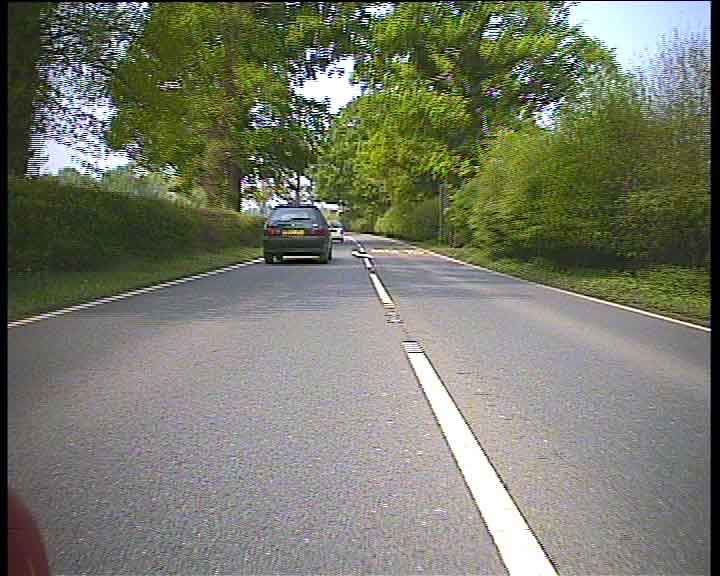
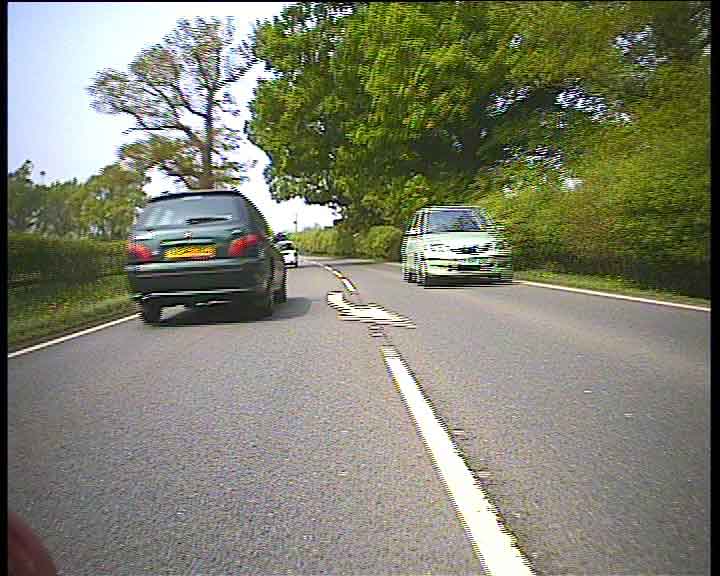
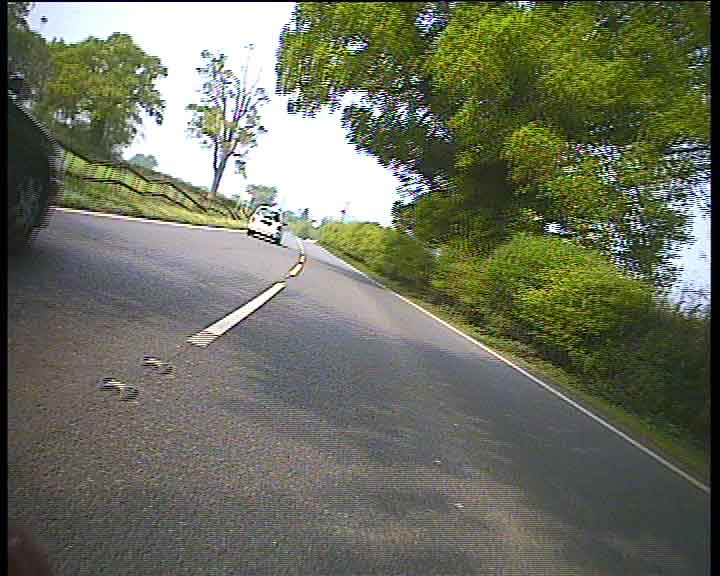
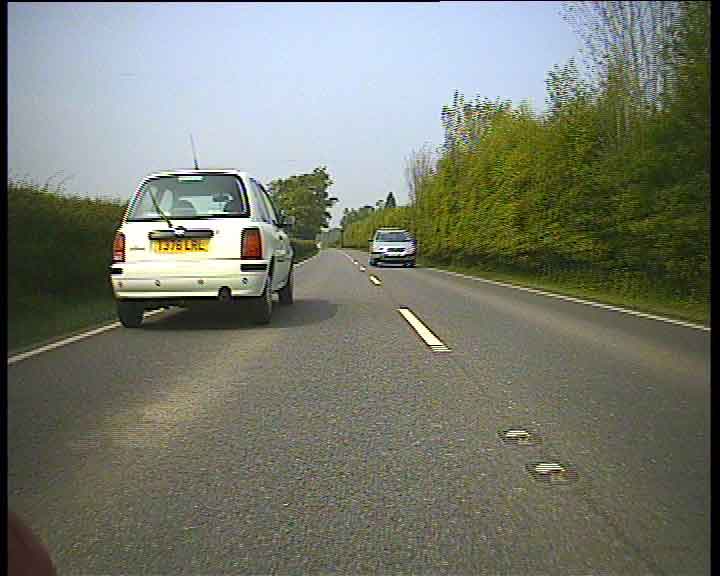
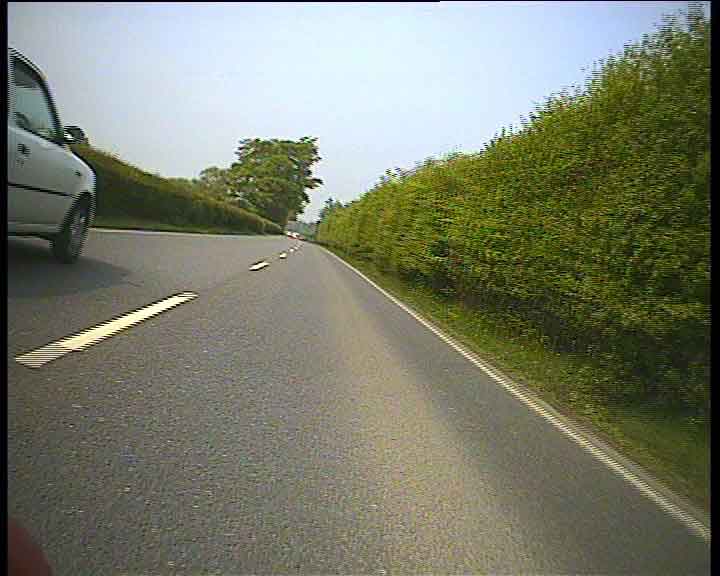
Clip from which the still images were taken
Listen for the throttle opening AFTER the overtake position is reached
In Overtaking (Part Two) you will find tips for dealing with overtaking on bends and in some other situations.
